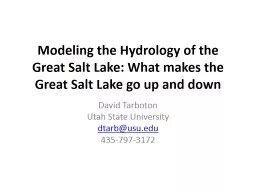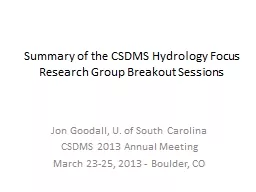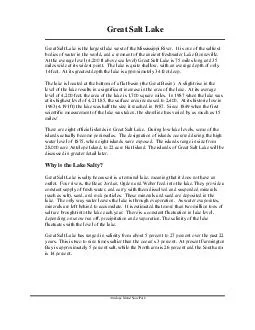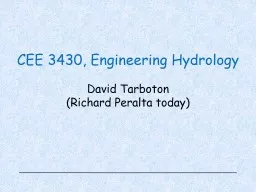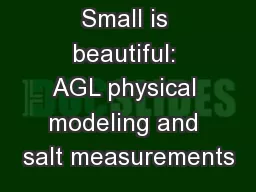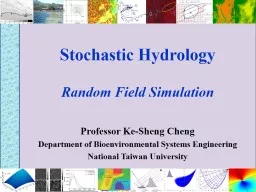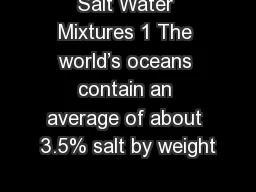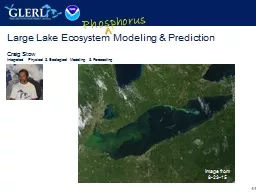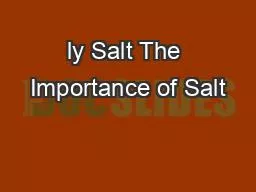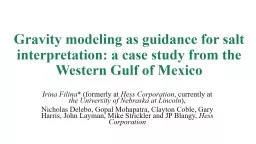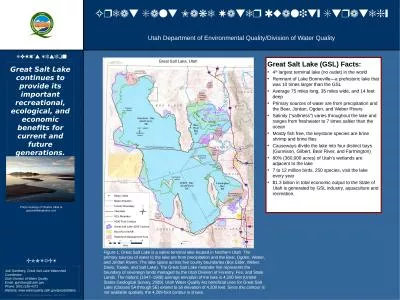PPT-Modeling the Hydrology of the Great Salt Lake: What makes t
Author : aaron | Published Date : 2018-01-01
David Tarboton Utah State University dtarbusuedu 4357973172 Outline Lake level fluctuations Water Budget Precipitation Streamflow Evaporation Sensitivity Salinity
Presentation Embed Code
Download Presentation
Download Presentation The PPT/PDF document "Modeling the Hydrology of the Great Salt..." is the property of its rightful owner. Permission is granted to download and print the materials on this website for personal, non-commercial use only, and to display it on your personal computer provided you do not modify the materials and that you retain all copyright notices contained in the materials. By downloading content from our website, you accept the terms of this agreement.
Modeling the Hydrology of the Great Salt Lake: What makes t: Transcript
Download Rules Of Document
"Modeling the Hydrology of the Great Salt Lake: What makes t"The content belongs to its owner. You may download and print it for personal use, without modification, and keep all copyright notices. By downloading, you agree to these terms.
Related Documents

